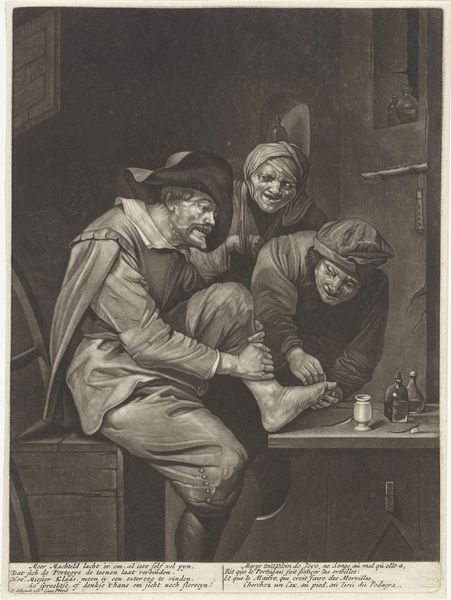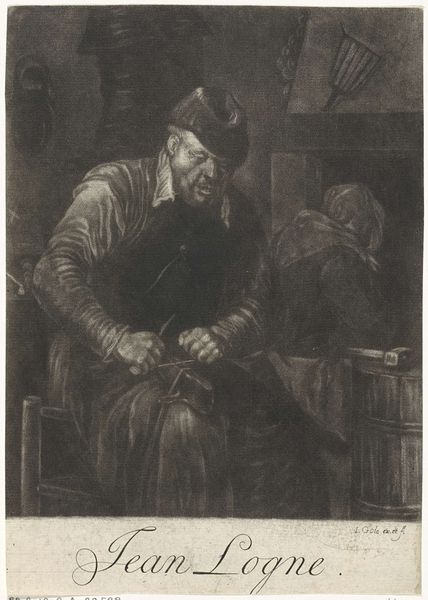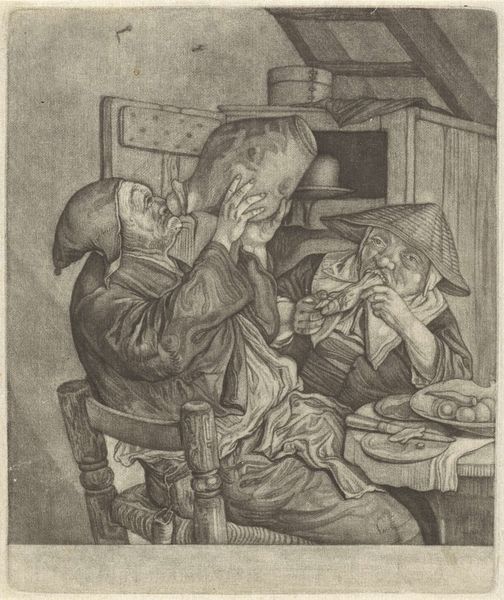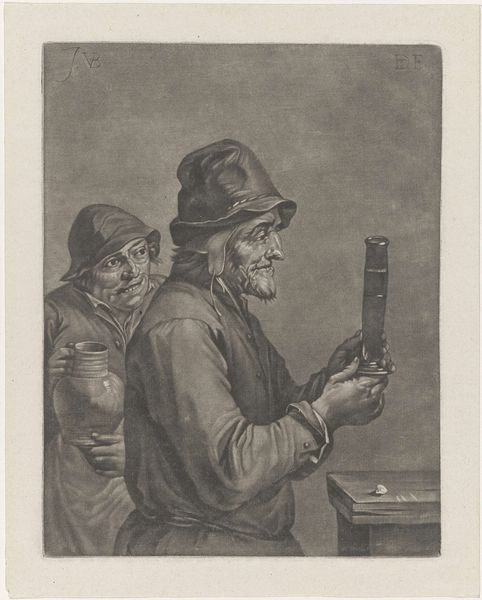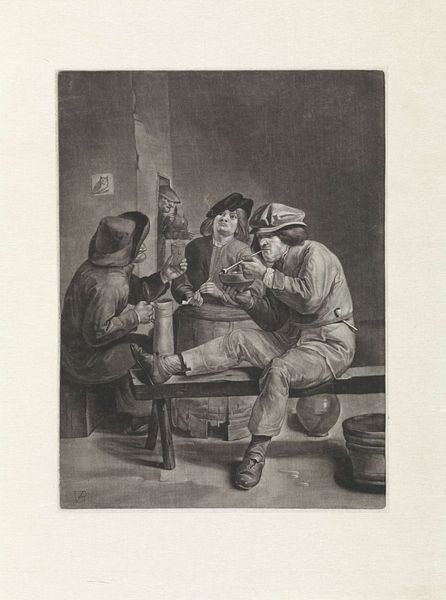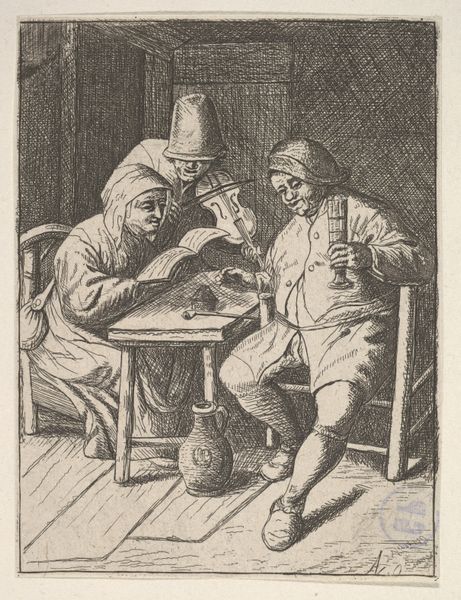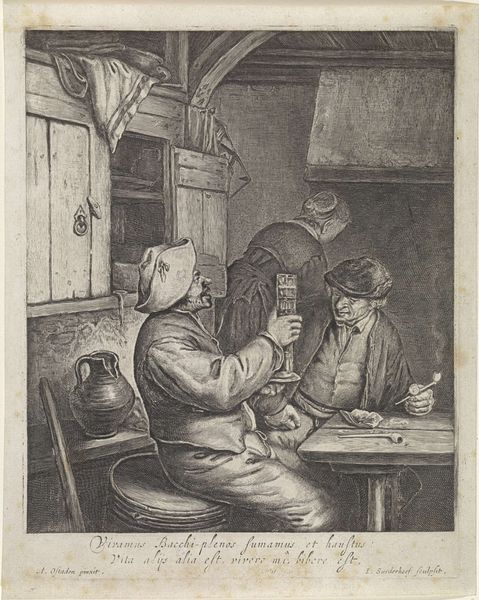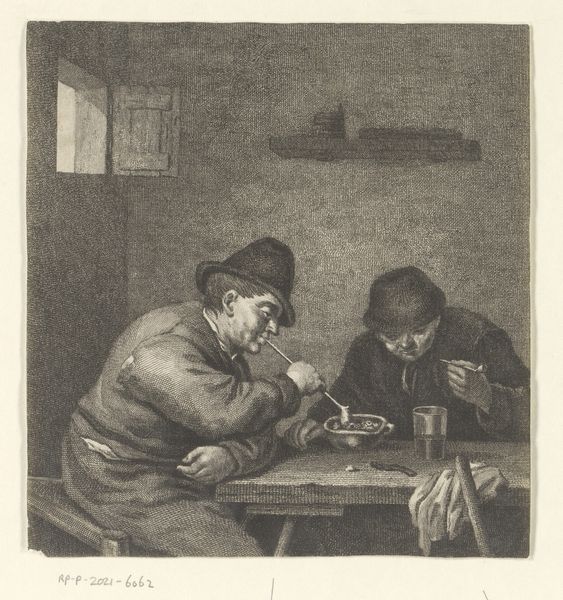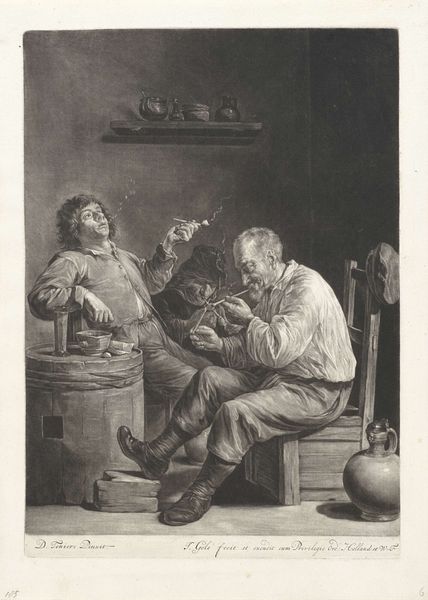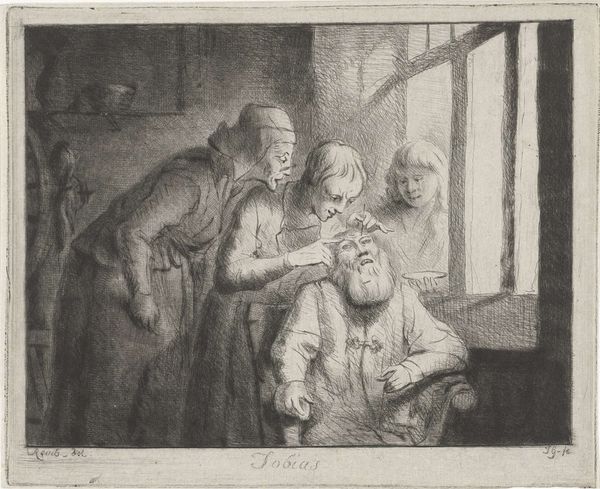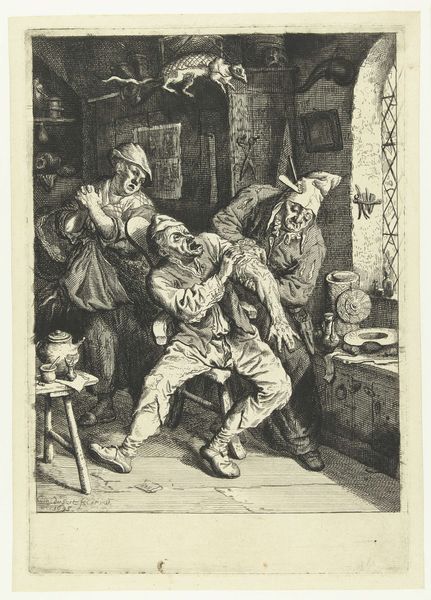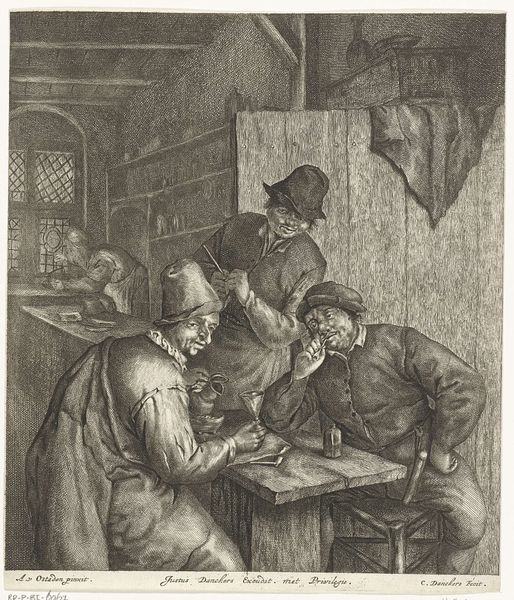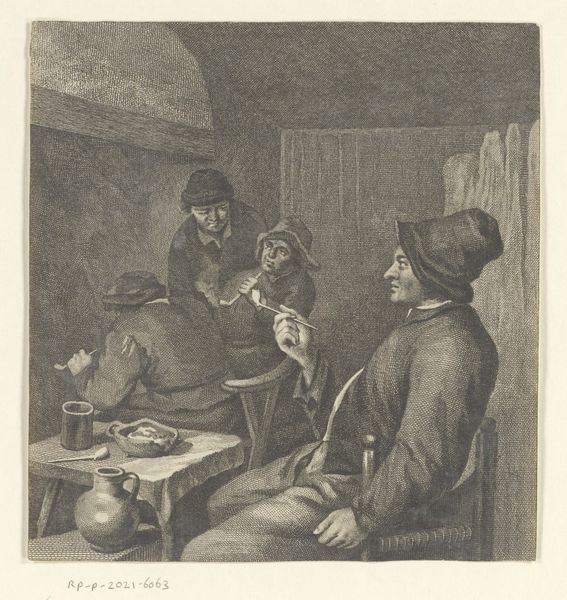
drawing, pencil
#
portrait
#
drawing
#
baroque
#
charcoal drawing
#
pencil drawing
#
pencil
#
genre-painting
Dimensions: height 294 mm, width 220 mm
Copyright: Rijks Museum: Open Domain
Curator: Let's discuss "Man bij een arts," attributed to Jan van der Bruggen, dating somewhere between 1659 and 1740. It's a drawing, seemingly rendered in pencil and perhaps charcoal, depicting a genre scene. Editor: My immediate impression is one of grotesque discomfort. The figures' exaggerated features and the close proximity feel unsettling, and I feel almost as if I am imposing upon the figures by gazing upon their situation. Curator: Indeed. Consider the historical context: During this period, the role of medicine and the access to healthcare were radically unequal. This artwork reflects how healthcare intersected with socioeconomic disparity; perhaps, this "doctor" wasn't particularly skilled or ethical, preying on a marginalized community who are shown being cared for, or not, depending on our perspective. Editor: The composition seems intentionally crowded, the subjects pushed towards the front of the frame and into the face of the viewer. There's a clear foreground focus, allowing viewers to follow what appear to be medical instruments used. I sense the Baroque penchant for dramatic realism, though muted somewhat by the grayscale medium and use of visible sketch lines. Curator: Yes, and analyzing the figures’ demeanor—the somewhat malevolent seeming expressions—makes you wonder about social critique and the status of people of color from that period. Do we see prejudice embedded? What do these exaggerated caricatures represent? What is Van Der Bruggen aiming to reflect or perhaps disrupt? Editor: The linear nature of the strokes lends a sense of dynamism to the work. Note the shadows—harsh yet essential—defining musculature, and the texture of their clothing. The artist directs the viewer's eye through contrast and form, rather than relying on color. There's a certain tension created by this. Curator: Precisely! Art is, therefore, an opportunity for engaging broader discussions on historical trauma and present inequalities through these powerful images and their contextual framing. This piece really invites interrogation, questioning, and awareness of these inequities. Editor: Ultimately, I am impressed by how form follows intention. The choice of line, shadow, and compression of space works to engage its viewers in this historical moment, encouraging us to observe, if perhaps with some degree of initial discomfort.
Comments
No comments
Be the first to comment and join the conversation on the ultimate creative platform.
